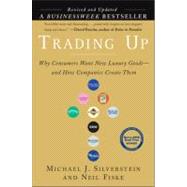
| Preface by Leslie Wexner | vii | ||||
| Introduction to 2005 Edition | xiii | ||||
|
1 | (14) | |||
|
15 | (37) | |||
|
52 | (24) | |||
|
76 | (29) | |||
|
105 | (23) | |||
|
128 | (24) | |||
|
152 | (16) | |||
|
168 | (19) | |||
|
187 | (17) | |||
| 10 Only the Best for Members of the Family: American Girl, Pet Food | 204 | (14) | |||
| 11 A Cautionary Tale of an Old Luxury Brand: Cadillac | 218 | (18) | |||
| 12 The Opportunity: Growth Areas, a Work Plan | 236 | (36) | |||
| 13 A Call to Action | 272 | (4) | |||
| About Our Sources | 276 | (9) | |||
| Acknowledgments | 285 | (6) | |||
| Index | 291 |
The New copy of this book will include any supplemental materials advertised. Please check the title of the book to determine if it should include any access cards, study guides, lab manuals, CDs, etc.
The Used, Rental and eBook copies of this book are not guaranteed to include any supplemental materials. Typically, only the book itself is included. This is true even if the title states it includes any access cards, study guides, lab manuals, CDs, etc.